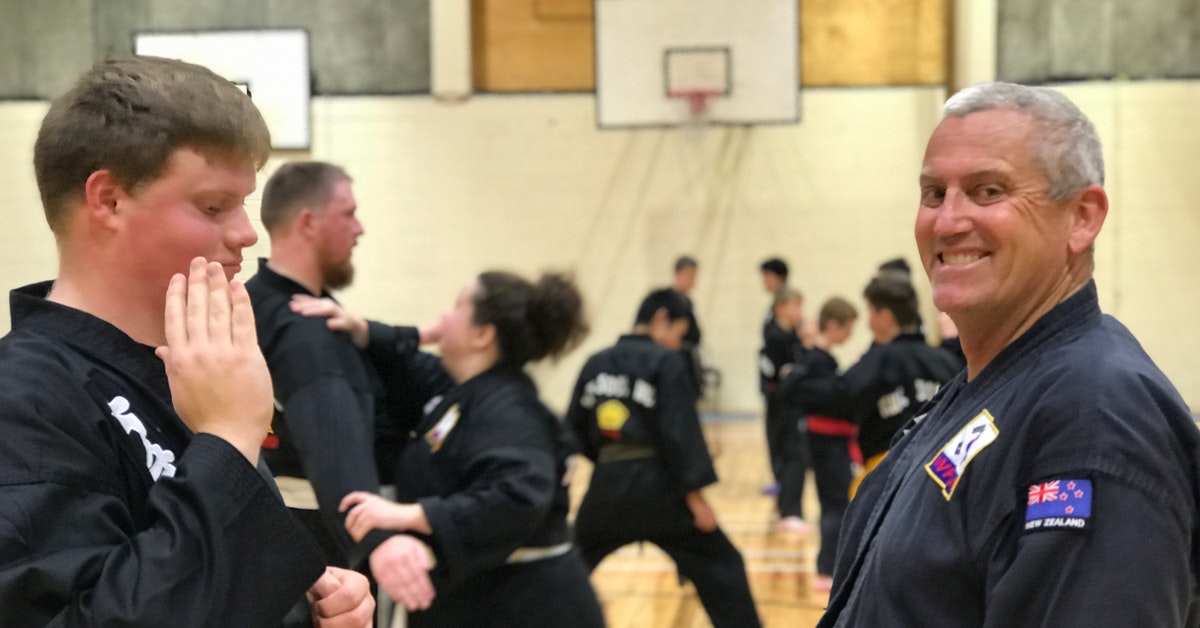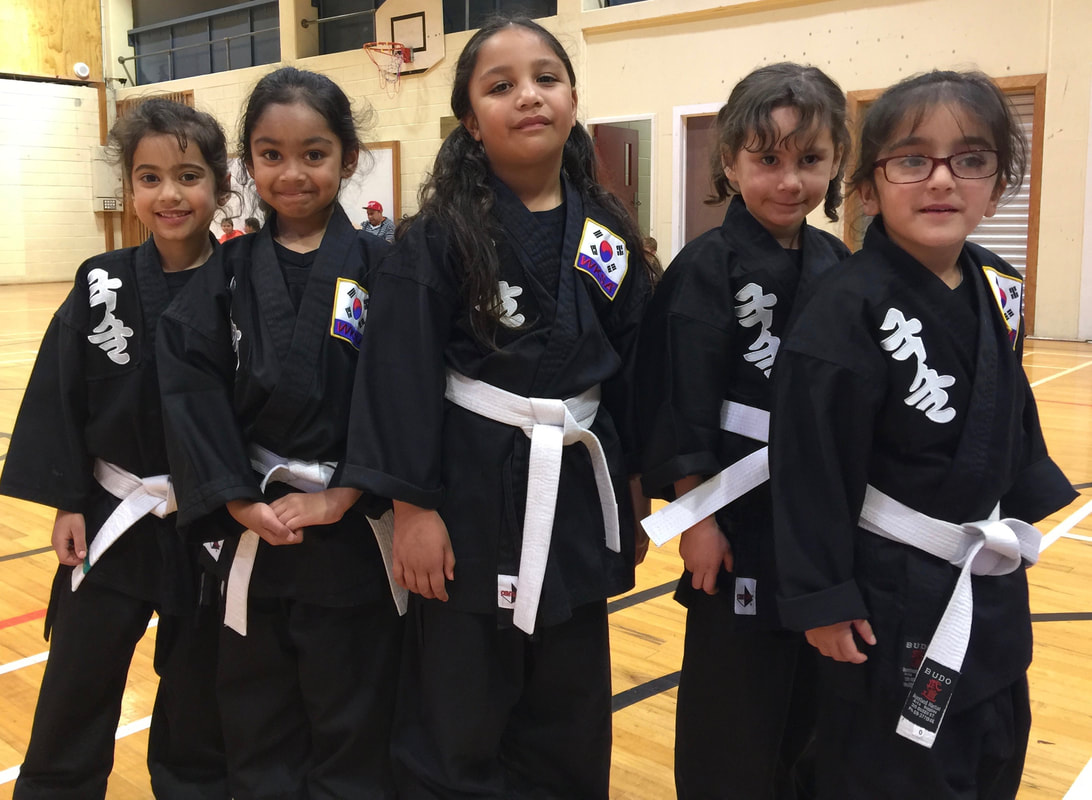|
For SBN Caroline and I, our martial art of Kuk Sool Won™ is more than a hobby. It is our job, our passion and central to the way we live our lives. However, for most people, martial arts are a recreational activity. In our experience, students participate to get fit, learn some self-defense skills, build their confidence, and to enjoy the companionship of their fellow students. They set goals around achieving a certain rank and are motivated by the new material they learn at each new belt level. While the practice of martial arts is important, as with any recreational activity, it must fit in around many other life commitments.
A recreational martial art usually involves around 2 to 4 hours of structured training a week in a class environment. While this is enough time to learn the basic skills, in our martial art of Kuk Sool Won™ there is a lot of material to learn and perfect, especially as a student progresses towards black belt (and beyond). This invariably means our students need to practice their material outside of class time. This can be challenging, particularly for those students who are time poor or do not have someone they can practice with outside of classes. As well, students may not always have a training partner at the same belt level in their school. For example, my training partner left when I was a yellow belt (after six months of training). As ours was a small school, I never had another regular training partner at my belt level. Having a fellow student of the same rank as a training partner makes training much more enjoyable, helps with motivation, and aids the learning process, as you help each other to practice and remember your material. I know from experience that it definitely makes training more difficult when you no longer have another student at your level to train with. While participating in martial arts as a recreational activity is enjoyable and rewarding, there are definitely some training challenges to be overcome. We have come up with some tips to make your training and practice more enjoyable and effective.
Martial arts training is a fantastic recreational activity. To get the most out of it, you need to be smart about how you train. The tips I have outlined above are ways to maximise the time you have available. Your instructor and other more senior students will also be a great source of knowledge. Ask for advice and be creative in the ways you train so that you can find works for you. JKN Jane Hurst First degree black belt and school owner Kuk Sool Won™ of Onewhero Copyright © 2018. Kuk Sool Won™ of Onewhero. All Rights Reserved.
0 Comments
Starting a martial art can be a very challenging experience. Depending on the style of martial arts, there can be a lot of material to learn at white belt level and at times, it can feel overwhelming and daunting. You are in a new environment, with people you probably don’t know. You are learning new skills and physically challenging your body in new and demanding ways. Everything is new and you can feel completely out of your comfort zone. I know I certainly did during my first few months as a white belt in Kuk Sool Won™. It was physically very hard for me and I felt outside of my comfort zone by how much there was to learn, particularly about the etiquette surrounding a traditional martial art. Fortunately, I had a very patient instructor who gently helped me through those challenging first few months.
I am now a Kuk Sool Won™ instructor and school owner and I regularly work with our new students. In the collective experience of myself and fellow school owner and 4th degree black belt, SBN Caroline, we have found that our new Kuk Sool students tend struggle with some or all of the following elements.
While it is not possible to remove these challenges, there are ways to make the first few months easier for new students and in my next blog I will focus on these. The key message for new students though, is this. It is completely normal to feel outside of your comfort zone when you first start. Your fellow students and instructors have all been there and experienced it. We understand and want to support you through the challenging first few months. Stick at it as the rewards of martial arts training are definitely worth it. JKN Jane Hurst First degree black belt and school owner Kuk Sool Won™ of Onewhero Copyright © 2018. Kuk Sool Won™ of Onewhero. All Rights Reserved.
In our experience and as discussed in my last blog on perseverance, the majority of people who quit martial arts training do so at two key points; within the first few months and shortly after becoming a black belt. There are many reasons people quit. The novelty of training may have worn off and they may be struggling with the commitment required to progress. They may have become frustrated with themselves and believe they are not good enough. Or they may be struggling with injury or illness. For newly promoted black belts, they may feel that they have achieved their goal and don’t want to make the commitment to several more years of training to progress to the next level.
There are a myriad of reasons for quitting. However, the way people quit is similar. They will often tell their instructor by text or email after they have made the decision to leave. Some just stop training without even telling their instructor. Others will say they are taking a break, but in our experience few will ever return to training. While students may quit in different ways and for differing reasons, one thing is consistent. They rarely talk to their instructor about the difficulties they are experiencing before they make the decision to quit. At some point during your martial art career you are likely to feel like giving up. So what should you do if you feeling like quitting?
Martial arts training is not easy. It is difficult and you are likely to feel like quitting at times. I am interested to hear about your experiences. Have you ever felt like quitting and if so, what did you do about it? Please leave a comment. JKN Jane Hurst First degree black belt and school owner Kuk Sool Won™ of Onewhero Copyright © 2018. Kuk Sool Won™ of Onewhero. All Rights Reserved. Martial arts are great for kids but we are often asked how old do they need to be to start training. Normally, kids need to be 6 or 7 to join a kids class. However, we have developed a specialised programme for 5 year olds which we offer at our Kuk Sool Won™ school in Pukekohe. Here are 5 great reasons why your 5 year old will benefit from our Kiwi Dragons™ programme in the Korean martial art of Kuk Sool Won™. 1. Respect and discipline: Kuk Sool Won™ specifically focuses on creating respectful citizens. We gently encourage our 5 year old students to develop self-discipline and show respect to their instructors, fellow students, parents, and themselves. We do this through individual and teamwork drills and exercises, as well as by role modelling good behaviour. 2, Focus and memory: 5 year olds have a short attention span. By using repetitive exercises and breaking martial art elements into small components, we capture the attention of our young students and gradually improve their memory. We supplement this with various reward systems to keep them focused and motivated. 3. Control and balance: By breaking down martial art elements into smaller components, young students gradually gain control over their developing bodies. They develop co-ordination and balance through exercises that encourage development of the left and right sides of their brain and body. 4. Self-defence: Self-defence is at the core of Kuk Sool Won™. From their first class our 5 year olds learn how to get away if someone grabs them. They consistently practice getting away quickly so that it becomes second nature. 5. Fitness and fun: With plenty of age-appropriate exercises, drills and body conditioning, 5 year olds gain strength and fitness. They also have a lot of fun, which is an essential part of the learning process with young children. 6. Spatial Awareness: Kids spend a lot of time on digital media these days and from an early age. Flat screens and no interaction with others and real objects will not help them learn about depth perception and spatial awareness. By participating in a group activity with real objects, kids get to experience 3 dimensional play. |
Caroline and Jane Hurst
Caroline is a 5th degree black belt and Jane is a 2nd degree black belt in the traditional Korean martial art of Kuk Sool Won™ . They run 2 Kuk Sool Won™ martial arts schools in New Zealand. Archives
March 2019
Categories
All
|






